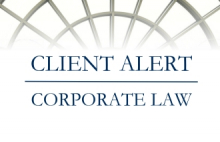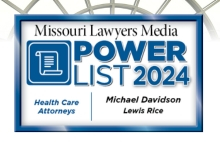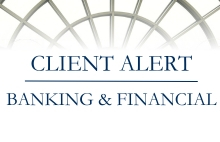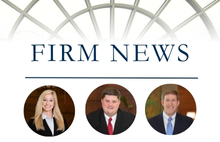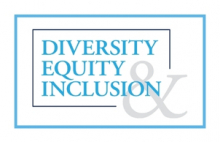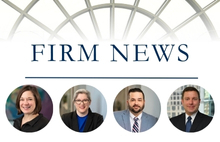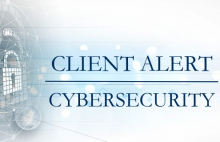Interim Final Rule on Forgiveness of Paycheck Protection Program (PPP) Loans Issued
May 26, 2020Late on Friday, May 22, 2020, the Small Business Administration (SBA) and the U.S. Department of Treasury (“Treasury”) issued a new interim final rule designated SBA-2020-0032 (the “Interim Final Rule on Forgiveness”) relating to forgiveness of loans made under the Paycheck Protection Program (PPP).
The Interim Final Rule on Forgiveness provides additional detail on the Paycheck Protection Program Loan Forgiveness Application (the “PPP Loan Forgiveness Application”), which was issued on May 15, 2020. Our prior alert relating to the PPP Loan Forgiveness Application can be accessed by clicking here.
This client alert highlights certain questions that have been answered by Interim Final Rule on Forgiveness, summarizes the provisions of the Interim Final Rule on Forgiveness, and notes some questions that remain unanswered.
Concurrently with SBA’s and Treasury’s issuance of the Interim Final Rule on Forgiveness, SBA issued the Interim Final Rule on SBA Loan Review Procedures and Related Borrower and Lender Responsibilities (the “Interim Final Rule on Loan Review Procedures”), which supplements the Interim Final Rule on Forgiveness by providing information for borrowers and lenders regarding SBA’s process for reviewing PPP loan applications and loan forgiveness applications. We have addressed the Interim Final Rule on Loan Review Procedures in a separate client alert here. For our full PPP coverage, click here.
While the Interim Final Rule on Forgiveness, the Interim Final Rule on Loan Review Procedures, and the PPP Loan Forgiveness Application provide detailed information relating to the PPP forgiveness process and requirements, we anticipate SBA and Treasury will issue additional guidance with respect to PPP loan forgiveness.
FAQs Answered (or Confirmed)
- Payroll costs are forgivable if they were (i) paid during the Covered Period or Alternative Payroll Covered Period, regardless of when incurred, or (ii) incurred during the Covered Period or Alternative Payroll Covered Period and paid on or before the next regular payroll date.
- PPP loan proceeds used to pay bonuses or hazard pay can be forgiven as Eligible Payroll Costs, subject to the $100,000 annualized limitation on cash payroll costs.
- Employer retirement and health care contributions are forgivable (i.e., Eligible Payroll Costs) if made on behalf of an owner-employee, but not if made on behalf of Schedule C filers, including general partners and self-employed individuals.
- Borrowers are subject to the Salary/Hourly Wage Reduction for each employee hired in 2020 (regardless of their salary or hourly wage) and each existing employee who was not paid more than the annualized equivalent of $100,000 in any pay period in 2019.
- The Salary/Hourly Wage Reduction Safe Harbor cures salary and wage reductions made during the Covered Period or the Alternative Payroll Covered Period as well as reductions made between February 15, 2020 and April 26, 2020 (the “Safe Harbor Period”).
- To qualify for the Salary/Hourly Wage Reduction Safe Harbor, a borrower must restore 100% of wages and salary (not just the amount needed to get above 75%).
- The FTE Reduction Safe Harbor will cure FTE Reductions made prior to the Covered Period or Alternative Payroll Covered Period.
- Interest on a borrower's PPP loan forgiveness amount will also be forgiven.
- In determining a borrower’s eligibility for a PPP loan, SBA will consider the rules and guidance at the time of the borrower’s loan application (as stated in PPP FAQ 17), as opposed to at the time the borrower submits its PPP Loan Forgiveness Application, as stated in the PPP Loan Forgiveness Application (as discussed in our prior client alert, available here).
- There is no immediate acceleration if forgiveness is denied, so long as the borrower was eligible for the PPP loan.
Process
The Interim Final Rule on Forgiveness includes the following details on the loan forgiveness process:
- To request forgiveness of a PPP loan, a borrower must complete and submit the PPP Loan Forgiveness Application (SBA Form 3508 or lender equivalent) to its lender (or the lender servicing its loan) at the end of its Covered Period or Alternative Payroll Covered Period.
- The lender will have 60 days from receipt of a complete application to review the application and make a decision.
- If the lender determines that the borrower is entitled to forgiveness of some or all of the loan forgiveness amount applied for, the lender must request payment from SBA at the time the lender issues its decision to SBA.
- The lender is responsible for notifying both the borrower and SBA of the lender’s decision with respect to the PPP Loan Forgiveness Application.
- If the lender denies a forgiveness request in whole or in part, the borrower must repay the remaining balance due on the PPP loan by the two-year maturity of the loan.
- SBA will, subject to any SBA review of the loan or loan application, remit the appropriate forgiveness amount to the lender, plus any interest accrued through the date of payment, not later than 90 days after the lender issues its decision to SBA. This appears to confirm that interest on the forgiveness amount will also be forgiven.
- SBA will deduct EIDL Advance Amounts from the forgiveness amount remitted to the lender.
Notably, the Interim Final Rule on Forgiveness states that in determining a borrower’s eligibility for a PPP loan, SBA will consider the rules and guidance at the time of the borrower’s loan application (as stated in PPP FAQ 17), as opposed to at the time the borrower submits its PPP Loan Forgiveness Application, as stated at the end of the PPP Loan Forgiveness Calculation Form.
As noted above, concurrently with the issuance of the Interim Final Rule on Forgiveness, SBA issued the Interim Final Rule on Loan Review Procedures, which provides additional details on the forgiveness process. To access our client alert on the Interim Final Rule on Loan Review Procedures, click here.
Eligible Payroll Costs
Eligible Payroll Costs, Generally
The Interim Final Rule on Forgiveness, consistent with the CARES Act and prior guidance, defines “payroll costs“ as compensation to employees (whose principal place of residence is the United States) in the form of:
- salary, wages, commissions, or similar compensation;
- cash tips or the equivalent (based on employer records of past tips or, in the absence of such records, a reasonable, good-faith employer estimate of such tips);
- payment for vacation, parental, family, medical, or sick leave;
- allowance for separation or dismissal;
- payment for the provision of employee benefits consisting of group health care coverage, including insurance premiums and retirement;
- payment of state and local taxes assessed on compensation of employees; and
- for an independent contractor or sole proprietor, wages, commissions, income, or net earnings from self-employment, or similar compensation.
As stated in the Interim Final Rule on Forgiveness, “[i]n general, payroll costs paid or incurred during the eight consecutive week (56 days) covered period are eligible for forgiveness.” Payroll costs are considered paid on the day that paychecks are distributed or the borrower originates an ACH credit transaction. Building on what was first announced in the PPP Loan Forgiveness Application, which stated that payroll costs are generally incurred on the day the employee's pay is earned, the Interim Final Rule on Forgiveness adds “[f]or employees who are not performing work but are still on the borrower’s payroll, payroll costs are incurred based on the schedule established by the borrower (typically, each day that the employee would have performed work).”
Limitations on Eligible Payroll Costs for Owner-Employees, General Partners, and Self-Employed Individuals
Eligible Payroll Costs for owner-employees and self-employed individuals are capped by “the lesser of 8/52 of 2019 compensation (i.e., approximately 15.38 percent of 2019 compensation) or $15,385 per individual in total across all businesses.” While the Interim Final Rule on Forgiveness does not explicitly state whether the foregoing applies to general partners, SBA, in the same section, states the term “self-employed individuals” include “Schedule C filers and general partners.” Based on the foregoing, it would be reasonable to conclude that the foregoing cap applies to general partners, as well.
Importantly, as a result of the cap, an owner-employee, self-employed individual, or general partner that has an interest in multiple businesses could not have more than $15,385 in PPP loans forgiven in total for all businesses in which such individual has an interest or is an employee. For example, if an individual is a general partner in two businesses that received PPP loans (for example, two restaurants for which the affiliation principles were waived), the two businesses would need to coordinate with the general partner on how the $15,385 (or lesser amount, if applicable) is allocated between the two businesses for purposes of their forgiveness request. Borrowers and such individuals will need to account for this limitation in preparing their PPP Loan Forgiveness Applications, and should document their process in doing so. This could be complicated for owner-employees, self-employed individuals, and general partners with interests in multiple businesses.
More specifically, the following limitations apply (note that while not expressly stated in the specific provisions set forth in the Interim Final Rule on Forgiveness, it appears the 8/52 concept and the $15,385 cap should be read into those provisions):
- Eligible Payroll Costs for owner-employees are capped by the lesser of (1) 8/52 of the amount of their 2019 employee cash compensation and employer retirement and health care contributions made on their behalf, and (2) $15,385 per individual in total across all businesses.
- Eligible Payroll Costs for individuals with income from self-employment who file a 2019 Form 1040, Schedule C are capped by the lesser of (1) 8/52 of the amount of their owner compensation replacement, calculated based on 2019 net profit, and (2) $15,385 per individual in total across all businesses.
- Eligible Payroll Costs for general partners are capped by the lesser of (1) 8/52 of their 2019 net earnings from self-employment (reduced by claimed section 179 expense deduction, in reimbursed partnership expenses, and depletion from oil and gas properties) multiplied by 0.9235, and (2) $15,385 per individual in total across all businesses.
Benefits
Employer retirement and health care contributions are forgivable (i.e., Eligible Payroll Costs) if made on behalf of an owner-employee, but not if made on behalf of Schedule C filers, including general partners and self-employed individuals, because, per the Interim Final Rule on Forgiveness, these amounts are paid out of their net self-employment income.
Covered Period or Alternative Covered Period
Consistent with the PPP Loan Forgiveness Application, the Interim Final Rule on Forgiveness permits borrowers to elect to seek forgiveness for payroll costs for either (1) the eight-week (56-day) period beginning on the first date the lender distributed PPP loan proceeds to the borrower, or (2) the eight-week (56-day) period beginning on the first day of the first payroll cycle in the Covered Period (the “Alternative Payroll Covered Period”). The Interim Final Rule on Forgiveness confirms the Alternative Payroll Covered Period is only available to borrowers with a bi-weekly (or more frequent) payroll cycle. The Interim Final Rule on Forgiveness does not address a situation where a borrower has more than one payroll cycle.
Paid or Incurred
The Interim Final Rule on Forgiveness clarifies that Payroll costs are forgivable if they were either (i) paid during the Covered Period or Alternative Payroll Covered Period, regardless of when incurred, or (ii) incurred during the Covered Period or Alternative Payroll Covered Period and paid on or before the next regular payroll date
Bonuses and Hazard Pay
In the Interim Final Rule on Forgiveness, SBA states: “The Administrator, in consultation with the Secretary, has also determined that, if an employee’s total compensation does not exceed $100,000 on an annualized basis, the employee’s hazard pay and bonuses are eligible for loan forgiveness because they constitute a supplement to salary or wages, and are thus a similar form of compensation.” Thus, PPP loan proceeds used to pay bonuses or hazard pay can be forgiven as Eligible Payroll Costs, subject to the $100,000 annualized limitation on cash Payroll Costs (which includes salary, wages, and similar compensation such as bonuses and hazard pay), except PPP loan proceeds cannot be forgiven to the extent used to give pay raises to owner-employees, general partners, or self-employed individuals because Eligible Payroll Costs for these individuals are generally limited to amounts earned by these individuals in 2019, as described above.
It appears from the quote above that SBA does not consider hazard pay and bonuses as “salary or wages,” but rather a supplemental form of “similar compensation.” This is consistent with how the CARES Act defines payroll costs to include, among other cash and non-cash compensation, “salary, wage, commission, or similar compensation.” SBA’s treatment of bonuses as separate from salary and wages may be significant for purposes of determining how an employee’s 2019 compensation should be determined for purposes of the Salary/Hourly Wage Reduction, because if bonuses are separate from salary and wages the borrower would have more employees that earned less than $100,000 in any single pay period in 2019 than if bonuses were treated as salary or wages.
Furloughed Employees
The Interim Final Rule on Forgiveness confirms that salary, wages, or commission payments to furloughed employees paid during the Covered Period or Alternative Payroll Covered Period are forgivable (i.e., they are Eligible Payroll Costs), so long as they do not exceed an annual salary of $100,000, as prorated for the Covered Period or Alternative Payroll Covered Period.
75% Requirement
The Interim Final Rule on Forgiveness confirms that at least 75% of the loan forgiveness amount must be attributable to payroll costs.
Eligible Nonpayroll Costs
Definition of Nonpayroll Costs
The Interim Final Rule on Forgiveness defines “Nonpayroll Costs” as:
- interest payments on any business mortgage obligation on real or personal property that was incurred before February 15, 2020 (but not any prepayment or payment of principal);
- payments on business rent obligations on real or personal property under a lease agreement in force before February 15, 2020; and
- business utility payments for the distribution of electricity, gas, water, transportation, telephone, or internet access for which service began before February 15, 2020.
Paid or Incurred
To be forgivable (i.e., an Eligible Nonpayroll Cost), a Nonpayroll Cost must be either: (i) paid during the Covered Period or (ii) incurred during the Covered Period and paid on or before the next regular billing date, even if the billing date is after the Covered Period. Accordingly, and as confirmed in the example given in the Interim Final Rule on Forgiveness, a borrower could obtain more than two-months’ worth of utilities forgiven, subject to the limitation that Nonpayroll Costs may constitute no more than 25% of the loan forgiveness amount.
Curiously, while the Interim Final Rule on Forgiveness states that advance payments (i.e., prepayments) of interest on mortgage obligations are not eligible for loan forgiveness, it does not answer the question of whether prepayments of other nonpayroll costs are forgivable.
Reductions to Loan Forgiveness Amount
Salary/Hourly Wage Reduction
As detailed in our prior client alert here, unless Salary/Hourly Wage Reduction Safe Harbor applies, a borrower’s loan forgiveness amount will be reduced if the employer reduced the salary or hourly wages of any employee by more than 25% during the Covered Period or the Alternative Payroll Covered Period, as compared to the period from January 1, 2020 to March 31, 2020. This reduction is referred to in the PPP Loan Forgiveness Application as the “Salary/Hourly Wage Reduction.” The methodology for reducing the loan forgiveness amount based on the Salary/Hourly Wage Reduction is set forth in the PPP Loan Forgiveness Application.
The Interim Final Rule on Forgiveness provides the following additional guidance with respect to the Salary/Hourly Wage Reduction:
- Borrowers are subject to the Salary/Hourly Wage Reduction for each employee hired on or before March 31, 2020 (regardless of their salary or hourly wage) and each existing employee who was not paid more than the annualized equivalent of $100,000 in any pay period in 2019.
- The Salary/Hourly Wage Reduction Safe Harbor cures salary and wage reductions made during the Covered Period or the Alternative Payroll Covered Period as well as reductions made between February 15, 2020 and April 26, 2020.
The Interim Final Rule on Forgiveness states that, “[t]o ensure that borrowers are not doubly penalized,” the Salary/Hourly Wage Reduction applies only to the portion of the decline in employee salary and wages that is not attributable to the FTE Reduction.
FTE Reduction
As detailed in our prior client alert here, unless the FTE Reduction Safe Harbor applies, a borrower’s loan forgiveness amount will be proportionally reduced by a reduction in the borrower’s total average weekly full-time equivalency (FTE) during the Covered Period (or the Alternative Payroll Covered Period) in comparison to the average weekly FTE during the applicable reference period. The Interim Final Rule on Forgiveness provides additional detail with respect to the FTE Reduction and the FTE Reduction Safe Harbor.
Who is a full-time equivalent employee?
Consistent with the PPP Loan Forgiveness Application, the Interim Final Rule on Forgiveness defines “full-time equivalent employee” as “an employee who works 40 hours or more, on average, each week.”
The Interim Final Rule on Forgiveness explains that “[t]he [SBA] Administrator considered using a 30 hour standard, but determined that 40 hours or more of work each week better reflects what constitutes full-time employment for the vast majority of American workers,” and that “[t]he [SBA] Administrator recognizes that not all borrowers maintain hours-worked data, and has [therefore] decided to afford such borrowers this flexibility in calculating the full-time equivalency of their part-time employees.”
How is Full-Time Equivalency (FTE) calculated?
The Interim Final Rule on Forgiveness, consistent with the PPP Loan Forgiveness Application, authorizes borrowers to elect one of two methods for calculating Full-Time Equivalency (FTE) for any employees who were paid for less than 40 hours per week, as follows:
- Option 1: the borrower calculates the average number of hours a part-time employee was paid per week during the Covered Period or Alternative Payroll Covered Period (for example, an employee who was paid for 30 hours per week on average during the Covered Period would be an FTE of 0.75); or
- Option 2: for administrative convenience, the borrower can assign to each part-time employee an FTE of 0.5 (regardless of average hours worked per week).
FTE Reduction
The Interim Final Rule on Forgiveness, consistent with the PPP Loan Forgiveness Application, states that a reduction in full-time equivalent (FTE) employees during the Covered Period or Alternative Covered Period in comparison to the borrower’s selected reference period (for a discussion of the reference periods, see our prior alert here) reduces the loan forgiveness amount by the same percentage as the percentage reduction in FTE employees (that is, there is a proportional reduction).
FTE Reduction Exemptions
The Interim Final Rule on Forgiveness clarifies and expands the list of exemptions to the FTE Reduction set forth in the PPP Loan Forgiveness Application.
While the PPP Loan Forgiveness Application stated that an employee who “voluntarily requested and received a reduction of their hours” would be exempt from the FTE Reduction, the Interim Final Rule on Forgiveness appears to expand this by stating “[t]his exemption is also available if a borrower previously reduced the hours of an employee and offered to restore the employee’s hours at the same salary or wages.”
More specifically, the Interim Final Rule on Forgiveness states that a borrower may exclude any reduction in FTE headcount that is attributable to an individual employee if:
- the borrower made a good faith, written offer to rehire such employee (or, if applicable, restore the reduced hours of such employee) during the Covered Period or the Alternative Payroll Covered Period;
- the offer was for the same salary or wages and same number of hours as earned by such employee in the last pay period prior to the separation or reduction in hours;
- the offer was rejected by such employee;
- the borrower has maintained records documenting the offer and its rejection; and
- the borrower informed the applicable state unemployment insurance office of such employee’s rejected offer of reemployment within 30 days of the employee’s rejection of the offer.
SBA announced in the Interim Final Rule on Forgiveness that “[f]urther information regarding how borrowers will report information concerning rejected rehire offers to state unemployment insurance offices will be provided on SBA’s website.“
The Interim Final Rule on Forgiveness reiterates other exemptions to the FTE Reduction set forth in the PPP Loan Forgiveness Application in providing that when an employee of the borrower (1) is fired for cause, (2) voluntarily resigns, or (3) voluntarily requests a reduced schedule during the covered period or the alternative payroll covered period (each an “FTE reduction event”), the borrower may count such employee at the same full-time equivalency level before the FTE reduction event when calculating the FTE Reduction. The Interim Final Rule on Forgiveness requires that borrowers that avail themselves of this exemption must maintain records demonstrating that each such employee was fired for cause, voluntarily resigned, or voluntarily requested a schedule reduction and must provide such documentation upon request.
FTE Reduction Safe Harbor
The FTE Reduction Safe Harbor will cure FTE Reductions made prior to the Covered Period or Alternative Payroll Covered Period. As stated in the Interim Final Rule on Forgiveness, “[i]f a borrower restores reductions made to ... FTE employees by not later than June 30, 2020, can the borrower avoid a reduction in its loan forgiveness amount? Yes ... if a borrower eliminates any reductions in FTE employees occurring during the safe harbor period [(i.e., between February 15, 2020 and April 26, 2020)] by June 30, 2020 or earlier, the borrower is exempt from any reduction in loan forgiveness amount that would otherwise be required due to reductions in FTE employees” (emphasis added). Accordingly, if the borrower qualifies for the FTE Reduction Safe Harbor, then no FTE Reduction will apply (even if there were reductions in FTE outside of the safe harbor period that are not restored).
Open Questions
While the Interim Final Rule on Forgiveness and the PPP Loan Forgiveness Application have answered many of the questions that borrowers and lenders had with respect to PPP loan forgiveness, there are many questions that remain unanswered for which additional guidance would be very helpful. We have noted some of the questions below.
Eligible Payroll Costs
- Can a borrower with multiple pay periods elect the Alternative Payroll Covered Period? Are borrowers that use different payroll cycles for employees limited to either the Covered Period or the Alternative Payroll Covered Period? Would such a borrower have to select the Alternative Payroll Covered Period for all employees, or just those who are on the other payroll cycle?
- If an employer would normally make a retirement plan funding during the Covered Period or Alternative Payroll Covered Period, does (and to what extent does) the payment constitute Eligible Payroll Costs?
Eligible Nonpayroll Costs
- Is rent paid to a related party forgivable?
- What transportation costs are forgivable?
- Are prepayments of nonpayroll costs (other than mortgage interest) forgivable?
Salary/Hourly Wage Reduction
- As the Salary/Hourly Wage Reduction only applies to employees who for all periods in 2019 received salary or wages at an annualized rate of less than or equal to $100,000, would an employee who received a $5,000 bonus during a single pay period in 2019 be excluded?
- How should employers calculate average wages for employees who were on leave or otherwise not employed for all or a portion of the full first calendar quarter of 2020?
- Is the annual salary or hourly wage as of February 15, 2020 determined just for a moment in time for purposes of determining the Salary/Hourly Wage Reduction Safe Harbor?
- Why does the Salary/Hourly Wage Reduction Safe Harbor not apply for any employee whose average annual salary or hourly wage for the period from February 15, 2020 through April 26, 2020 is greater than their annual salary or hourly wage as of February 15, 2020 (see Step 2(b) of the PPP Loan Forgiveness Application)?
- How is an employee’s average annual salary or wage rate on June 30, 2020 determined for purposes of the Salary/Hourly Wage Reduction Safe Harbor?
- How does the Salary/Hourly Wage Reduction Safe Harbor and the FTE Reduction Safe Harbor apply where a borrower's Covered Period or Alternative Payroll Covered Period is after June 30, 2020?
FTE Reduction
- How do borrowers determine the amount to enter into "FTE Reduction Exceptions" in Table 1 of the PPP Loan Forgiveness Application?
- For what period must the employees be restored before June 30, 2020, if any, for a borrower to qualify for the FTE Reduction Safe Harbor?
- How does the FTE Reduction Safe Harbor apply where a borrower’s Covered Period or Alternative Payroll Covered Period is after June 30, 2020?
Other Questions
- In the PPP Loan Forgiveness Application, does "total number of employees" refer to employees of the borrower only, or of the borrower and its affiliates? Does the answer change if the borrower is exempt from the affiliation rules (e.g., NAICS code 72)?
- What is the deadline for submission of the PPP Loan Forgiveness Application?
- Can a borrower continue to spend PPP loan proceeds that the borrower has not spent by the end of June 30, 2020 (i.e., the end of the "covered period" as defined in section 1102 of the CARES Act)? What if a borrower receives a PPP Loan such that its Covered Period or Alternative Covered Period extends beyond June 30, 2020?
Conclusion
Borrowers that intend to seek PPP loan forgiveness and lenders that will be asked to approve such forgiveness should carefully review the Interim Final Rule on Forgiveness and the PPP Loan Forgiveness Application. While many questions that we and our clients have had regarding the PPP loan forgiveness process have been answered by the Interim Final Rule on Forgiveness, other questions remain unanswered as noted above. We anticipate additional guidance will be issued relating to PPP loan forgiveness. Lewis Rice will continue to monitor these developments and provide updates as needed.
Our attorneys are closely monitoring these developments as they occur and will make regular updates to our COVID-19 Resource Center. If you have any questions about the implications and disruptions of COVID-19 on your business, please reach out to one of the authors above or another member of the Task Force.
